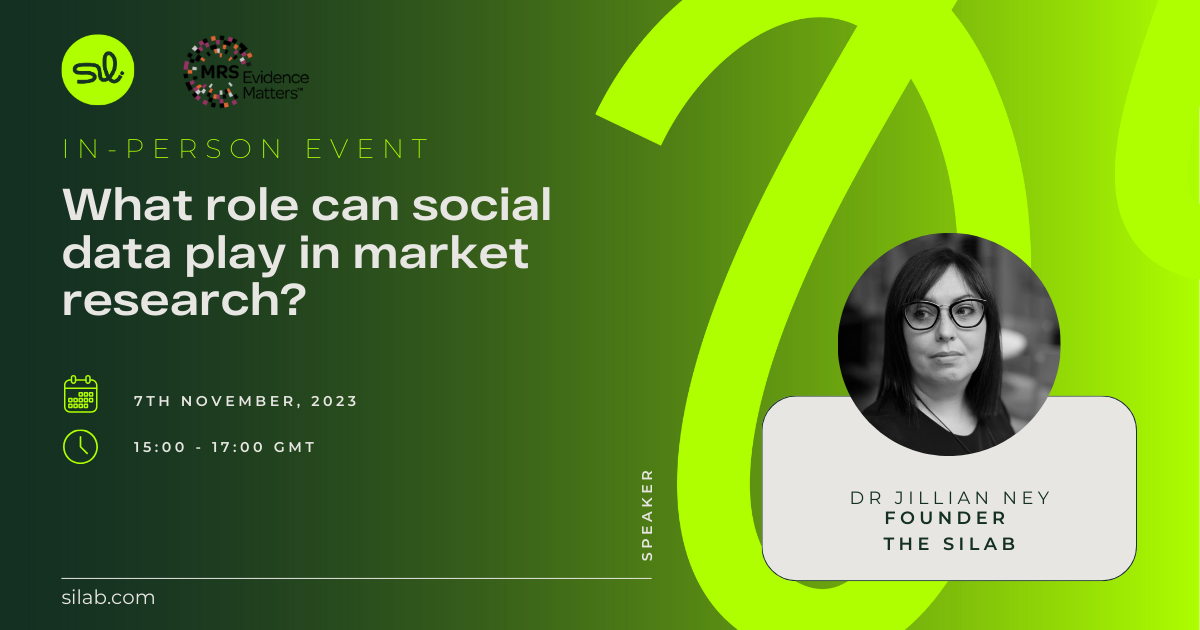Brand tracking: How to use social media analysis within your toolkit
Why is it important to track consumer perceptions of your brand?
Brand tracking continuously measures your brand’s health, analysing how your consumers think and feel. Good brand tracking will indicate how your brand is perceived, how that compares with competitors in your category, who buys your brand and whether your initiatives are driving brand awareness, consideration, and purchase among those who aren’t current customers. In some cases, brand tracking research will also help collect more detailed feedback to identify what matters to customers and highlight areas of unmet needs.
By continuously tracking your brand, you will also be able to assess its performance over time. Brand tracking programmes based on quantitative research tend to be extensive and exhaustive, and therefore costly, which means their frequency is often limited to a few times a year. Perceptions measured through quantitative techniques are also unlikely to shift quickly without the stimulus of a campaign, be it through media or advertising, meaning the necessity of tracking brand health on a more regular basis is often discounted.
Key benefits of using social media for brand tracking
The proliferation of channels, particularly the growth of mobile devices and social media, has meant that consumers can engage with a brand through a multitude of touchpoints. Therefore, social listening offers a key opportunity to learn from your customers and what they are saying about your brand.
Using social listening as a method offers multiple benefits:
- It provides access to unprompted views of your brand, as perceptions of your brand are shared in the moment without interviewer influence or being based on recall.
- You can look at brand perceptions at any point in time as historical data is generally widely available across social media sources with some exceptions.
- You can use an existing framework (for example brand image statements or constructs) as the basis of your measurement or you can be guided by conversations and consumer opinions to build your framework.
- You can easily benchmark your brand awareness and perceptions against your competitors.
- You can take the pulse of your brand health based on social media on a more regular basis than you would using a quantitative research programme.
Social listening for brand tracking: Benchmarks and metrics
Social media conversations offer an almost infinite canvas to track brand health. As with any research, the key is to have the right framework and to create the right benchmark so that you can set the right targets and measure shifts appropriately.
Brand health measurement can include a plethora of metrics depending on its focus. On the most basic level, a good brand tracking study will look at awareness of your brand and assess whether your intended positioning is reflected in consumers’ opinions.
These are commonly known as brand perceptions. Over time, consumers develop perceptions about your brand, and it forms an image in their minds about who you are and what you stand for. Comparing this to your own brand’s positioning and benchmarking it against your competitors is where the value of brand tracking is.
How do you track awareness and perceptions using social media conversations?
Share of voice
Ultimately, social media conversation volumes can closely reflect brand awareness and these can be easily benchmarked against your competitors. Alternatively, you can look at your category or sector share of voice to get a relative measure.
Brand perceptions
Perceptions of your brand are contained in conversations through the way people talk about you. You can use your existing brand health measurement framework and look for evidence of your key image constructs being present. Another option is to let conversations guide what perceptions are being expressed. In the latter scenario, you can start by using text analytics to allow you to group social media posts by topic to see which brand associations are the strongest.
Sentiment analysis
It is also useful to look at sentiment against perceptions to assess where your brand is at and understand what is driving negative perceptions. You can take your sentiment measure even further by looking not just at the tonality of conversations mentioning your brand but by also assessing consumers’ likelihood to recommend your brand. This is known as a social Net Promoter Score (NPS). Commonly used to assess perceptions of services, it can also be useful to measure the salience of brands.
What to consider for global tracking
Tracking your brand across multiple geographies is made easier by using social listening as it provides almost instant access to a rich database of verbatim about your brand. The main challenge when it comes to analysing the data is the need for the right human and cultural context, which is why having access to native language and in-country analysts is vital.
A key consideration here is whether you want to apply the same framework across all geographies, but this is only advisable if you have a consistent positioning and want to perform a global benchmark. The preferred alternative would be to assess your local market positioning based on consumer perceptions expressed on social media, which would provide a region-specific framework.
Utilising your social media brand tracking framework to assess campaign performance
Social media allows brand owners to understand the impact of their social media campaigns in real-time. However, most often campaign analysis focuses on immediate impact metrics, such as reach and engagement, which are unlikely to be meaningful without adequate benchmarks.
With benchmarks being key in any kind of evaluation, using your brand tracking framework applied to social media can be an effective way of assessing the impact of your campaign in the context of whether it is shifting brand health metrics.
It is worth noting that using social media as the basis for campaign evaluation does not limit its scope to social media campaigns, as often, advertising or promotional campaigns will be discussed on social media.
If you do not already have a regular brand health tracking set-up based on social media, it’s a good idea to run an initial benchmark covering 3-6 months prior to the campaign launch. The advantage of using social media conversations is that most tools offer instant access to historical data. Looking at volumes of social media conversations before the campaign is also a useful benchmark. As explained above, volumes are a proxy measure of awareness and will indicate whether your campaign has helped shift levels.
In summary, assessing existing attitudes and perceptions of your brand, either using your positioning as a framework or letting social media conversations guide it, will be the key basis of using brand health measures to assess campaign impact through meaningful shifts in your brand’s perceptions.
This article was originally posted on the Convosphere website.
This interview was recorded via LinkedIn Live, if you prefer to view on LinkedIn, click the button below.
View InterviewSee related content









